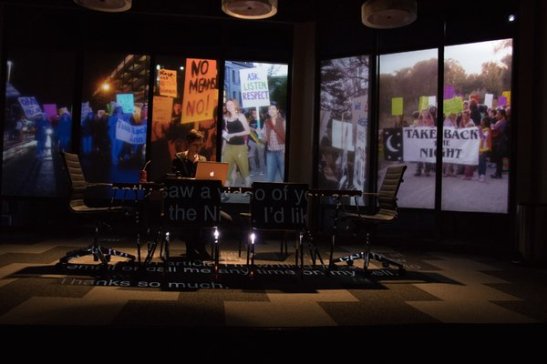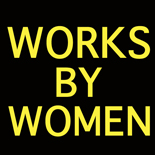Interview: Jocelyn Kuritsky
Stet, the new play by Kim Davies at the Abingdon Theatre, is a powerful piece inspired by the Rolling Stone article “A Rape on Campus” and the reporter’s investigation into sexual assault in college. It’s also the first full production of The Muse Project, the brainchild of fierce actress Jocelyn Kuritsky.
What a thought provoking idea–make actresses the center of play development and creation. With The Muse Project, actresses choose what kind of role they want to play, and then a creative team is built around that idea. Sure, this sounds like a wonderful experiment, a different way to workshop new material. It’s also a terrific way forward. Stet is a stirring play with big ideas and sensitive, yet bold performances by Jocelyn, Jack Fellows, Déa Julien, Lexi Lapp and Bruce McKenzie.
Jocelyn spoke to Works by Women about how The Muse Project came together, the nature of truth and her supportive collaborators on this journey.
WORKS BY WOMEN: Tell me about your first impulse to create The Muse Project. And how it has sprung to life.
JOCELYN KURITSKY: I am very inspired by many of my female colleagues, specifically actresses. In many ways, actresses are my most prized network. The female actors I know are really thoughtful, intelligent, multi-talented people. In fact, even now, in the midst of previews for Stet, I find myself getting a lot of feedback and encouragement from other actresses, my cohorts; which is very heartening. And Muse came out of a curiosity to know more about my girlfriends, really. I kept wondering what it would be like to ask the female performers in my life about the characters they wanted to play, who they fantasized about working with, what stories they wanted to tell; and I really wondered about what it would be like to put the impulses and desires of female actors into action.
This idea (The Muse Project) has been in the incubator for a couple years. I kept trying to get grants – but I think it was hard for folks to fully understand what I was trying to do, or to see the value of designing theater pieces around specific female actors and their ideas. All said, Susan Bernfield at New Georges and Ian Morgan at The New Group were continually supportive. Ian kept encouraging me to try it out in workshop formats (which I now term “mini Muses”) and both Susan and Ian pushed me to pursue my own Muse Project. Once I started looking into my own piece, other collaborators rose to meet me; and before I knew it, I had a production.
WBW: How did you imagine your dream role? What were the vital characteristics?
JK: I like mercurial characters. I like characters that are hard to pin down – that are elusive. That’s very challenging and exciting to me. I really wanted to play someone who was intellectual and fractured…because I am. And, above all, I was interested in an “idea play.” I was interested in developing a piece that really made people think – that made me think.

WBW: How did you work with Kim Davies, the playwright, in creating the piece? What was your process like?
JK: Kim is truly one-of-a-kind. She’s highly observant, intensely studious, and an incredibly empathetic being. When I met her, I really felt like she understood what I was after. She also had a lot of strong ideas. And she took what I wanted to heart, in a really profound way. The role she created is practically written off of my idiosyncrasies, which is so cool, and weird. Also, the project didn’t scare her, which I really appreciated, and continue to appreciate. This is a scary project.
There was a lot of discussion between me, Kim, and Tony Speciale (the director), and a tremendous amount of research in this process. We all met last June for the first workshop (aka mini Muse) at The New Group to develop a scene and an outline of the piece. The scene we developed has now become one of the most pivotal scenes in the play, and after countless meetings, Skype calls, and a few workshops, the play’s trajectory really emerged. Little did I know that a year later we’d be here. It’s been incredible.
WBW: Stet was inspired by a true story. One that looks at the nature of truth. I’m curious what you think about truth vs “truth” – those things that resonate as believable, but aren’t in fact correct. How do you delve into that as a play?
JK: I am very interested in the nature of truth, which is really embodied by this character that Kim made for me. I think literal truth and emotional truth can sometimes be in combat with each other, and that fascinates me. I am also very compelled by social justice causes, and I am really interested in what happens when literal truth and emotional truth don’t line up in settings that require proof. I am very very interested in political theater, too, which is unbelievably hard to pull off. So, we took kernels of what we thought were the most compelling pieces of this “true story” to begin the process. Among the questions we started with are: What is rape?, What does it mean to report the truth?
WBW: You’ve had support from Abingdon, The New Group and New Georges. What has those companies’ support meant?
JK: With Abingdon, it’s been the production. Tony, our director and the artistic director of Abingdon, believed in me, Kim, the project, and he made this happen. He dug into find resources to mount this as a full production, which is really something. It’s been intense. Shows aren’t normally mounted this quickly; but I think Tony understood how topical everything was, and he wanted us to seize the day. He also has great respect for both me and Kim as artists, and wanted to support our points of view, our artistry, and the whole endeavor.
The New Group and New Georges have mentored and provided some really essential resources, like space. They’ve been guiding lights throughout the process – which is quite a lot. Both Ian and Susan have spent hours with me in person, on the phone, in the rehearsal room, acting as both advisors and collaborators. And The New Group staff and the New Georges staff and my manager, Brian Long, have all worked to help me with the practicals of what a new model like this means. We’re still working on how a new model like this navigates the current theatrical structures.
WBW: Why is this paradigm shift needed? How does it change the landscape?
JK: Historically, actresses are probably the people with the least power in the room on any given project. I am really interested in flipping power structures in general. I am so curious about what that does to a system. So, I wondered what would happen if we took the person with, traditionally, the least power and gave them the torch. I also know that there’s a guarantee of a woman’s story when the person at the helm, at the outset, is an actress. I want more women’s stories.

JK: More lady performers comin’ up! I am very excited to share all these incredible artists and their ideas.
Stet continues through July 3rd at the Abingdon Theatre in New York City. A portion of full price tickets will be donated to Take Back the Night. For more info, please visit the Abingdon’s web site.

